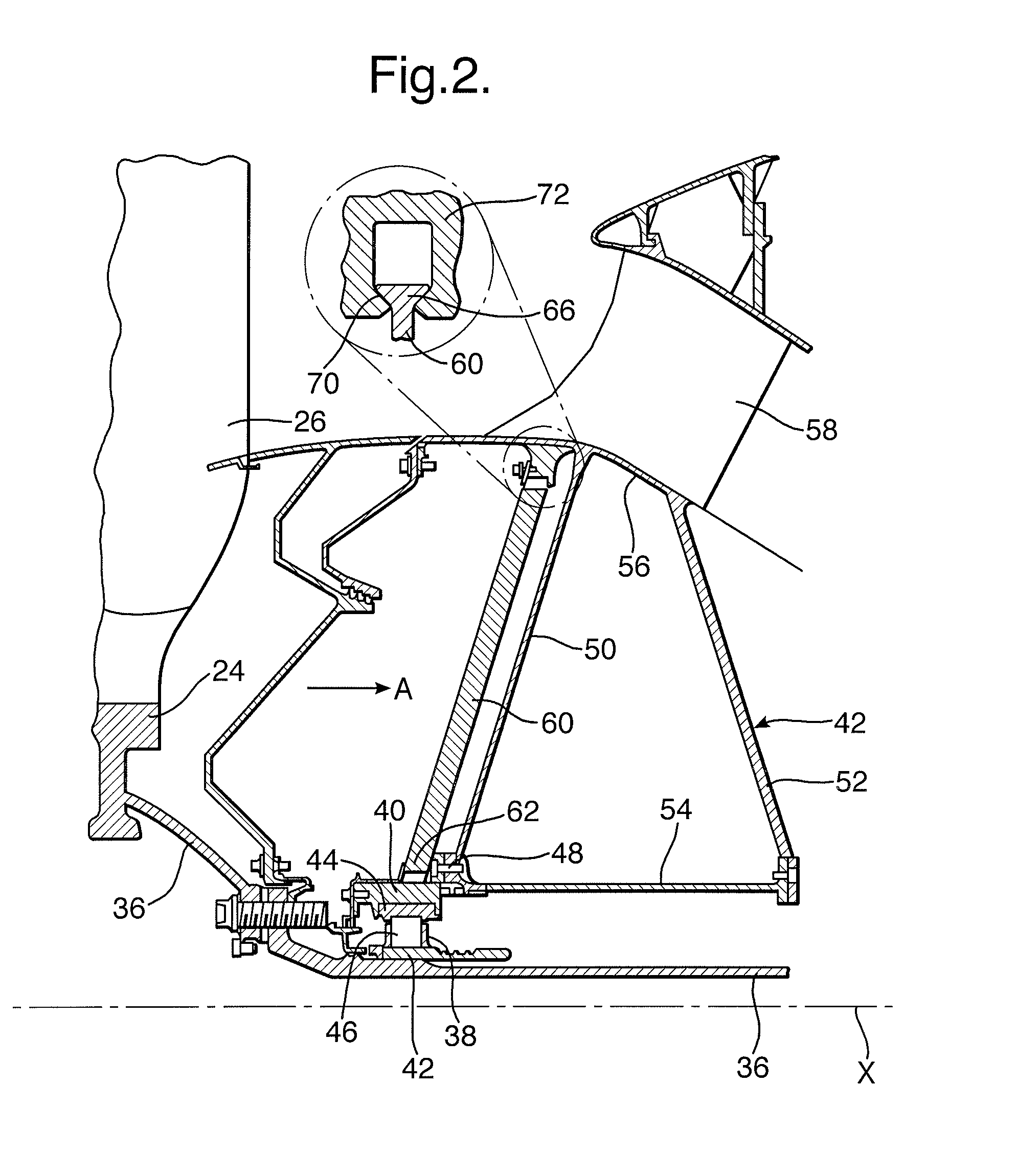Turbofan gas turbine engine
a gas turbine engine and turbine technology, applied in the direction of liquid fuel engines, machines/engines, elastic bearings, etc., can solve the problems of reduced efficiency, fan damage, and fan damage,
- Summary
- Abstract
- Description
- Claims
- Application Information
AI Technical Summary
Benefits of technology
Problems solved by technology
Method used
Image
Examples
Embodiment Construction
[0030]A turbofan gas turbine engine 10, as shown in FIG. 1, comprises in axial flow series an inlet 12, a fan section 14, a compressor section 16, a combustion section 18, a turbine section 20 and an exhaust 22. The fan section 14 comprises a fan, which includes a fan rotor 24 carrying a plurality of circumferentially spaced radially outwardly extending fan blades 26. The fan rotor 24 and fan blades 26 are surrounded by a fan casing 28 to define a fan duct 30. The fan casing 28 is supported from a core engine casing 32 by a plurality of circumferentially spaced radially extending fan outlet guide vanes 34. The compressor section 16 comprises an intermediate-pressure compressor (not shown) and a high-pressure compressor (not shown) or a high-pressure compressor (not shown). The turbine section 20 comprises a high-pressure turbine (not shown), an intermediate-pressure turbine (not shown) and a low-pressure turbine (not shown) or a high-pressure turbine (not shown) and a low-pressure t...
PUM
 Login to View More
Login to View More Abstract
Description
Claims
Application Information
 Login to View More
Login to View More - R&D
- Intellectual Property
- Life Sciences
- Materials
- Tech Scout
- Unparalleled Data Quality
- Higher Quality Content
- 60% Fewer Hallucinations
Browse by: Latest US Patents, China's latest patents, Technical Efficacy Thesaurus, Application Domain, Technology Topic, Popular Technical Reports.
© 2025 PatSnap. All rights reserved.Legal|Privacy policy|Modern Slavery Act Transparency Statement|Sitemap|About US| Contact US: help@patsnap.com



